BOOK THIS SPACE FOR AD
ARTICLE AD View now at Google Chrome
View now at Google Chrome
 View now at Linux Mint
View now at Linux Mint
 View now at Ubuntu
View now at Ubuntu
 View now at Zorin
View now at Zorin
 View now at MX Linux
View now at MX Linux
Some people still insist that using Linux is hard. Sure, it was difficult -- when I started with the Linux desktop back in the 1990s. But that was a long time ago. Today, the easiest desktop of all, Chrome OS, is simply Linux with the Chrome web browser on top of it. The more full-featured Linux desktop distributions are as easy to use in 2021 as Windows or macOS.
Yes, you can get a lot more from Linux if you know how to do shell programming and the like. But that's also true of Windows and PowerShell. With both operating systems, you don't need to know the deep ins and outs of either one to get your work done.
So why would you move? Well, for starters, Linux is far more secure than its rivals. Looking ahead, as Ed Bott points out, many of you may end up facing a security disaster if you keep using Windows 10.
Also, Linux, unlike Windows 11, will run on pretty much any PC you've got lying around. Linux doesn't require much in the way of a computer to do just fine. For example, I have a 2007-vintage HP Pavilion Media Center TV m7360n PC with a 2.8GHz Pentium D 920 dual-core processor, and 2GBs of RAM and a 300GB SATA drive PC that's still running Linux to this day. Good luck running any modern version of Windows on that.
It used to be hard to install programs on Linux, but that's no longer the case. Under the hood, things can still be complex, but now almost all distros have application stores. These make installing new programs as simple as pick and click.
If you still need some Windows programs, you can always try Crossover Linux to run them on Linux. It won't run all Windows apps by any means, but it runs many of them surprisingly well.
In any event, since most such programs -- even Adobe PhotoShop -- are now available as Software-as-a-Service (SaaS), there's less need than ever for Windows-specific programs. Indeed, we're moving to a business world where all you really need is a web browser to enable you to use a Desktop-as-a-Service (DaaS) platform.
The future of the desktop aside, unlike Windows, where your only real choices today are Windows 10 or 11, there are hundreds of Linux desktop distributions. On top of those are numerous Linux desktop interfaces, each with its own distinctive look and feel, such as KDE, GNOME, Cinnamon, Lxde, Xfce, and many more. Most distributions have a primary user interface, such as Fedora and GNOME and OpenSUSE and KDE, but also enable you to pick from one to three others. Since you're just starting with Linux, I recommend you stick with the distro's main interface.
What's a would-be Linux desktop user to do? Luckily for you, you don't have to try them all out to find a good fit.
The key question is: "What do you want to use Linux for?" For beginners, I look at what's the easiest to pick up; the best overall Linux desktop; the easiest Linux desktop to learn; the simplest Linux for Windows users and the easiest Linux for users with older machines.
For those of you who haven't met me before, I've been using Linux as a desktop operating system since 1993, two years after Linux was created. And, long before that, I was using Unix as a desktop. Since then, I've used dozens of different Linux distributions, and I ran the Desktop Linux site for many years. Today, although I also run Windows and macOS, the Linux desktop is my main desktop. In short, I know the Linux desktop.
So, with all that, here are my suggestions for the best desktops for beginners.
Chrome OS
Easy-to-use, affordable computing without Windows headaches
Do you use the web for everything? Do you write with Google Docs, use Mint for your personal finances, and Gmail for your email? If that's you, then what you want is a Chromebook.
Chrome OS, the operating system behind Chromebooks, is based on Gentoo Linux. Gentoo is an experts-only Linux, but you don't need to know a darn thing about it. While you can get to Linux from Chrome OS, you'd need never look under the hood.
Anyone can use Chrome OS. I mean, if you're reading this article via a web browser, which you almost certainly are, you already know how to use "Linux" enough to work with a Chromebook.
You also don't need to buy a Chromebook to use Chrome OS. Neverware, formerly an independent company and now a branch of Google, offers CloudReady With this free Chrome OS variant, you can convert pretty any PCs or Mac that's been built since 2007 into a much safer and more usable Chromebook clone. No-fuss, no muss, and a lot more useful than whatever you're currently running on an older PC.
Linux Mint
Best-of-breed desktop Linux
What's a Windows 10 user to do? They should turn to Linux Mint, in particular, the version using the Cinnamon interface.
Unlike Chrome OS, Mint with Cinnamon looks a lot like XP or Windows 7. It uses a Windows Icon, Menu, and Pointer (WIMP) interface much like the one you probably already know and love. It's not a one-to-one match with XP or Windows 7, but most Windows users will find Cinnamon a comfortable fit.
Linux users who grew up with the GNOME 2.x style interface will also love Cinnamon. Another worthwhile alternative for people who are fond of GNOME 2.x, and which is also integrated into Mint, is MATE. While Cinnamon rests on the foundation of the GNOME 3.x desktop, MATE is an outright GNOME 2.x fork. MATE is also available on Mint.
Be that as it may, my current favorite desktop operating system is Linux Mint 20.2. I can highly recommend it to anyone.
Ubuntu
Simple to use
ubuntu.comHow easy is Ubuntu with Unity to use? I once got my 82-year old mother-in-law up and running on it, and we didn't even speak the same language!
Ubuntu is simple, straightforward, and has a great deal of community support. If you have a question, someone out there has almost certainly had the same problem and come up with an answer.
By default, Ubuntu uses the GNOME 3.x interface. It takes a bit of learning if all you've known before is Windows, but it's really not that hard.
The most recent long-term support (LTS) is Ubuntu 20.04. This is the one you want if you're running Ubuntu in a business. If you want to explore Ubuntu's latest and greatest, you want Ubuntu 21.10.
Zorin OS
Easier jump from Windows
Zorin OSSo, you really, really don't like the idea of even learning a little bit of GNOME. OK, in that case, give Zorin OS a try. It's based on Ubuntu, as is Mint. But you can use its custom Zorin Appearance app to provide the desktop with a Windows look and feel.
Zorin's whole point in being is to help you move over from Windows, or macOS, to Linux. It comes in four different versions: Core, Lite, and Education editions are free, while Ultimate, which can duplicate the macOS look and feel, costs $39. The Core edition really gives you everything you need, while the Lite version gives older machines a new lease on life. Education does just what the name says; it comes with some education programs pre-installed The most recent version of any of the three is Zorin OS 16.
This operating system also comes with documentation that's designed to help you move from Windows to Linux.
MX Linux
Easy-to-learn and lightweight
mxlinux.orgA few years back, one of my favorite Linux desktops was MEPIS Linux. This Debian Linux-based distribution worked well. Eventually, though, its founder and maintainer, Warren Woodford, had to turn his attention to other businesses. MEPIS's fans joined forces with the related antiX Linux communities and revived the project as MX Linux.
Today, it's a good, solid lightweight desktop that uses Xfce as its interface. It works well, and it's very popular. For beginners, what I like about it is that it's easy to pick up, and you can run it on even ancient Pentium II gear. In short, it's ideal if you want to get your feet wet with Linux on a PC that would otherwise be collecting dust in your closet.
So, ready to give Linux a try? It's worked well for me for almost 30-years, and it can work well for you for the next 30. While most desktops seem to be heading to a DaaS model--including Windows -- I can guarantee you Linux will still be available for your PC decades from now.
The most recent edition available today is MX Linux 21 "Wildflower.:
Is it hard to install applications on Linux?
It used to be hard to install programs on Linux, but that's no longer the case. Under the hood, things can still be complex, but now almost all distros have application stores. These make installing new programs as simple as pick and click.
Can I run Windows programs on Linux?
If you still need some Windows programs, you can always try Crossover Linux to run them on Linux. It won't run all Windows apps by any means, but it runs many of them surprisingly well. Some Microsoft programs are now available natively on Linux. These include the Edge browser and Teams.
You can also run Windows 365 Cloud PC, a full Windows 10 or 11 cloud-based desktop, from Linux. This subscription service costs a pretty penny. Or, for free, you can run Microsoft 365 for the web (formerly Office 365), which gives you access to a subset of Word, Excel, PowerPoint, Outlook, and OneNote's functionality.
Do you need security software on desktop Linux?
No, not really. True, while Linux is much safer than Windows, it's not totally immune from attacks. But, those attacks tend to be much rarer than those that plague Windows or macOS. That said, you should still run a firewall, which Linux has built-in, and for stopping malware in its tracks you might consider installing ESET Endpoint AntiVirus for Linux or ClamAV.
Other beginner linux distros worth considering
As I mentioned earlier, there are hundreds of Linux distros. Many of these are also suitable for beginners. Of these, you might also look at the elementary OS, which by design looks a lot like macOS; Pop!_OS, which is a lightweight Ubuntu distro from System76, a top Linux PC company; and Peppermint OS. This last is another Ubuntu-based Linux distribution. Its claim to fame is it integrates Chrome-friendly cloud and web-based applications with the desktop using Ice.
.png)
 2 years ago
80
2 years ago
80 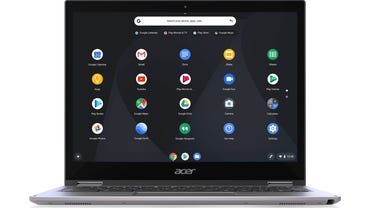
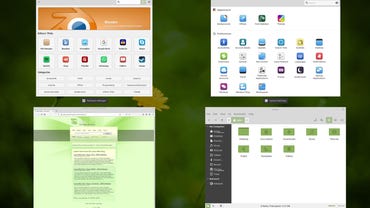
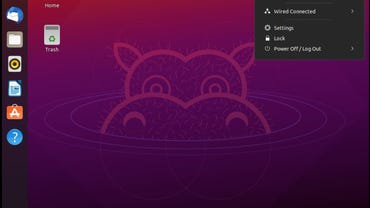
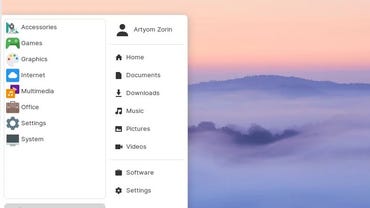
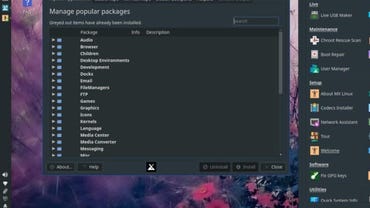















 Bengali (Bangladesh) ·
Bengali (Bangladesh) ·  English (United States) ·
English (United States) ·